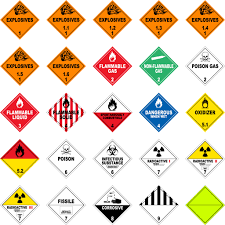The Requirements of TDG Regulations

Understanding the Requirements of Transportation of Dangerous Goods (TDG) in Canada
The Transportation of Dangerous Goods (TDG) Act and Regulations play a crucial role in ensuring the safe transportation of hazardous materials across Canada. Whether by road, rail, air, or water, the transportation of dangerous goods poses inherent risks that must be managed effectively to protect public safety and the environment. In this comprehensive guide, we will delve into the requirements of TDG in Canada, exploring its scope, key provisions, compliance obligations, and the importance of adherence to TDG regulations.
Understanding The Requirements of TDG Regulations:
The TDG Act and Regulations establish a comprehensive framework for the safe handling, shipping, and transportation of dangerous goods within Canada. These regulations apply to a wide range of substances and articles that pose risks to health, safety, property, or the environment if not handled properly.
Scope of TDG Regulations:
The scope of TDG regulations encompasses various aspects of dangerous goods transportation, including:
- Classification: Determining the proper classification of dangerous goods based on their physical and chemical properties, such as flammability, toxicity, and corrosivity.
- Packaging: Ensuring that dangerous goods are packaged in approved containers and packaging materials that meet specified performance standards.
- Marking and Labeling: Properly marking and labeling packages containing dangerous goods with appropriate hazard symbols, warnings, and identification information.
- Documentation: Completing and maintaining accurate shipping documents, including shipping manifests, dangerous goods shipping declarations, and emergency response information.
- Training and Certification: Providing training to personnel involved in the transportation of dangerous goods, including drivers, handlers, shippers, and emergency responders.
Compliance Obligations:
Compliance with The Requirements of TDG Regulations is mandatory for any person or organization involved in the transportation of dangerous goods in Canada. This includes:
- Shippers: Individuals or companies responsible for preparing and packaging dangerous goods for transportation must comply with TDG requirements for classification, packaging, labeling, and documentation.
- Carriers: Transportation companies and carriers responsible for transporting dangerous goods by road, rail, air, or water must adhere to TDG regulations regarding vehicle safety, loading procedures, and emergency response.
- Handlers: Individuals involved in the handling, loading, unloading, and storage of dangerous goods must receive proper training and follow established safety protocols to prevent accidents and incidents.
- Emergency Responders: First responders and emergency services personnel must be prepared to effectively manage incidents involving dangerous goods, including containment, mitigation, and evacuation procedures.
Importance of Adherence to TDG Regulations:
Adherence to The Requirements of TDG Regulations is essential for several reasons:
- Public Safety: Compliance with TDG regulations helps protect public safety by reducing the risk of accidents, spills, and releases of hazardous materials during transportation.
- Environmental Protection: Proper handling and transportation of dangerous goods minimize the risk of environmental contamination and damage to ecosystems in the event of spills or leaks.
- Worker Safety: Training and certification requirements for personnel involved in dangerous goods transportation ensure that workers are equipped with the knowledge and skills to handle hazardous materials safely.
- Legal Compliance: Failure to comply with TDG regulations can result in legal consequences, including fines, penalties, and legal liability for damages resulting from non-compliance or accidents.
- Reputation Management: Companies that demonstrate a commitment to safety and compliance with TDG regulations enhance their reputation and credibility in the industry and with stakeholders.
- Continuity of Operations: Effective management of dangerous goods transportation risks minimizes disruptions to supply chains and ensures the smooth flow of goods and materials across Canada.
The Transportation of Dangerous Goods (TDG) Act and Regulations are essential components of Canada’s regulatory framework for the safe transportation of hazardous materials. By establishing standards for classification, packaging, labeling, documentation, training, and emergency response, TDG regulations help mitigate risks and protect public safety, the environment, and workers’ health.
Compliance with The Requirements of TDG Regulations is mandatory for anyone involved in the transportation of dangerous goods, including shippers, carriers, handlers, and emergency responders. Adherence to TDG requirements not only ensures legal compliance but also promotes safety, environmental protection, and the continuity of operations for businesses and industries across Canada. Through education, training, and proactive risk management, stakeholders can effectively navigate the requirements of TDG and contribute to safer transportation practices nationwide.
Categories
- Aerial Lift
- ATV Training
- Bear Awareness
- Chainsaw Training
- Confined Space
- Defensive Driving
- Forklift Training
- Lockout Tagout
- Online Safety Training
- Overhead Crane
- Pipeline Construction Safety Training
- Propane Handling
- Safety Training Benefits
- Scissor Lift
- Skid Steer Training
- Space Awareness
- TDG
- Telehandler Forklift
- Traffic Control
- Train the Trainer course
- Training Course
- Uncategorized
- WHMIS
- Workplace Harassment and Violence Preventiont
